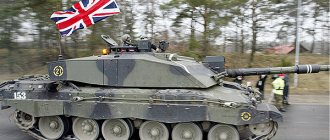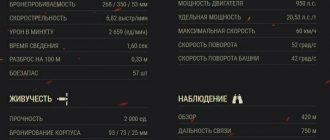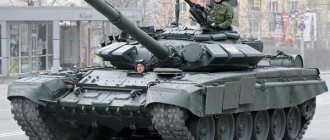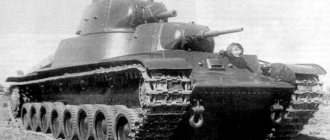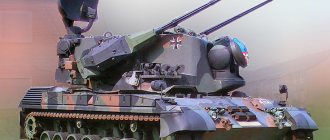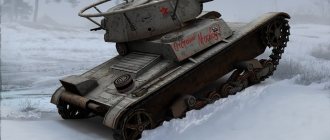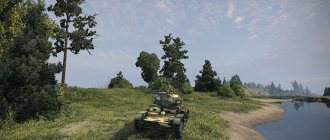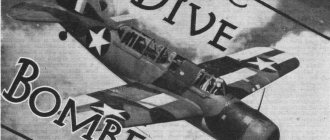Story
At the beginning of the new millennium, the T-90 was one of the most popular tanks in the world. However, already in 2004, the T-90A tank, a modernized version of the T-90, was put into production. It was distinguished by a more powerful 1000-horsepower diesel engine; the cast turret was replaced with a welded one - reinforced and more resistant. The night sight was also improved - a new thermal imager made it possible to increase the night vision range from 1800 to 4000 m. The gun stabilizer was also replaced in the new tank, which significantly increased the accuracy of shooting on the move and doubled the aiming speed. At the beginning of 2012, the Russian troops were armed with about 500 T-90A, T-90 tanks and their modifications.
Almost simultaneously, the development of the T-90AM tank began, the newest modification of the T-90A, which can be considered a completely new type of combat vehicle. The export version of the T-90AM tank, named T-90SM, was demonstrated on September 9, 2011 during the international exhibition “Russian Expo Arms 2011” at the training ground in Nizhny Tagil. It was then that experts had the opportunity to verify that the T-90AM is, in fact, a fundamentally redesigned T-90A model.
T-90SM
Main battle tank. The view of a Western specialist (part 1)
Bundeswehr demonstration of the LEOPARD tank in Münster, Germany
A main battle tank (MBT), also known as a battle tank or a utility tank, is a self-propelled armored fighting vehicle with significant firepower, primarily firing direct fire from its main gun with high muzzle velocity projectiles to destruction of armored and other targets, having high off-road capability and a high level of self-protection, but not intended and not equipped for transporting combat units.
MBTs were initially considered as a replacement for light, medium, heavy and super-heavy tanks. Their development accelerated during the Cold War with the development of lightweight composite armor. In some armies, MBTs are still complemented by light tanks.
Today, MBTs are seen as a core component of a modern army. Modern MBTs rarely operate alone, as they are organized into armored units supported by infantry, which can accompany the MBTs in infantry fighting vehicles (IFVs). They are also supported by surveillance aircraft or attack aircraft.
Before and during World War II, the tank design suffered from a number of limitations, mainly related to engine power and transmission characteristics. They allowed the designer to create a tank with either high maneuverability, good protection, or a large-caliber gun, but in most cases they did not allow combining all three characteristics at the same time. Combined with tank theory, which emphasized high-speed penetrations behind enemy lines, these limitations effectively led to two classes of tanks.
The first class systems, known by various names - light tanks, cruiser tanks or even wedges for the smallest variants, were designed from the very beginning as high-speed vehicles. The concept was to exploit gaps in the enemy's position and penetrate deep into his rear with independent armored groups. This could disrupt the enemy's logistics and operational control, as well as delay the movement of reserves to the front line. Operations of this nature were believed to undermine or completely disrupt the ability of frontline troops to continue fighting.
To create such gaps in enemy positions, vehicles of the second class were intended - heavy tanks or infantry tanks - which were supposed to work together with advanced infantry units. Since they were expected to move forward at the same speed as a human, they were not required to operate at high speeds, so engine power could be redistributed to carry a much larger payload. Infantry tanks were distinguished by much thicker armor, larger caliber guns and a larger track area, allowing them to cross a battlefield saturated with various obstacles.
Finally, during the war, another class of armored vehicles appeared, special self-propelled anti-tank guns. They were basically modifications to existing tanks, lightened to allow the installation of much larger guns.
The emergence of greater firepower
Despite a fairly developed theory and pre-war exercises, the concept of tank combat quickly turned out to be outdated. The battlefield was no longer as impassable as during the First World War, and the maneuverability of armored vehicles had increased significantly. This was clearly demonstrated by the rapid, large-scale tank battles in North Africa and the Soviet Union, when armored forces carried out thrusts over hundreds of kilometers. In these cases, the problems associated with owning two classes of cars became especially obvious; tanks capable of a head-on collision with the enemy mostly ended up far behind, trying to catch up with the main forces. Those tanks that could maintain the tempo of the battle were lightly armored and turned out to be easy prey for enemy anti-tank guns and rifles. Anti-tank installations were especially vulnerable, always finding themselves in the wrong place at the wrong time, left alone with the attacking infantry and rarely finding their prey in the form of a tank.
This has led to systems with slightly better protection that can withstand anti-tank rifles and small arms fire. On the other hand, the caliber of the tank's own weapons had to increase in order to cope with enemy tanks that had the same level of protection. This evolution led to the medium tank, which dominated the fighting in the second half of the war. Basically, these models weigh 25-30 tons and have engines with a power of 400-500 hp. were armed with cannons of approximately 75 mm caliber. Notable examples include the Soviet T-34, the most popular tank at that time, the German PANZER IV and the American M4 SHERMAN. The mass production of these tanks resulted in most other tanks being taken out of service or retained for specific missions.
The emergence of MBT
Meanwhile, the rapid increase in engine power in the aviation sector has caused the so-called “trickle-down effect” of technology. A very notable example was the deal between Rolls-Royce and Rover, which laid the foundation for Rolls-Royce's success in creating the first jet engines, while Rover began developing the Rolls-Royce MERLIN engine for installation in a tank. The resulting Rolls-Royce METEOR engine offered such an increase in power that the CROMWELL and related projects were eventually classified as fast tanks (light and medium), which, however, had the firepower and armor of infantry tanks. The constant development of the basic CROMWELL project ultimately led to the creation of the CENTURION tank. The armor of this tank could withstand a hit from a shell fired from any small and medium caliber anti-tank gun, the gun mounted on it could disable even larger enemy tanks, and its running characteristics exceeded those of earlier light tanks. It was so functionally flexible that it was classified as a "universal tank". This tank formed the basis of the post-war tank units of the British Army. It is currently considered the first MBT project.
The third generation ALTAY MBT was developed by Turkey as part of the MITUP ALTAY program. ALTAY will be the first national MBT intended for the Turkish army. The first prototype is expected to be ready in 2015
History lessons
The history of the tank began in World War I, when all-terrain armored fighting vehicles were first deployed as a solution to trench warfare, ushering in the era of mechanized warfare. Crude and unreliable at first, tanks eventually became the mainstay of ground armies. By the beginning of World War II, their design had been significantly improved and, as a result, tanks were widely used in ground theaters of that time. During the Cold War, the doctrine of the modern tank emerged along with the universal MBT. The tank is still the mainstay of ground combat operations in the 21st century.
The First World War created a demand for armored self-propelled weapon systems that could overcome any type of terrain, which eventually led to the development of the tank. The big drawback of the armored vehicle, the predecessor of the tank, was that it could only move on more or less flat terrain, which is why developments were necessary to improve the maneuverability of the new systems.
The tank was originally created as a special weapon to solve an unusual tactical problem - the stalemate of the so-called trench warfare on the Western Front. The armored tank had to withstand artillery bombardment and machine gun fire, pass through barbed wire where infantry units could not get through, and eventually its appearance on the front line broke the stalemate.
During the First World War, few realized that the means of returning mobility and attack capabilities to the battlefield were already present in a mechanism designed to revolutionize combat operations on land and in the air. It was the internal combustion engine that made the development of the tank possible and ultimately contributed to the creation of the mechanized force that would take over the previous tasks of the cavalry and loosen the "grip" of the machine gun on the battlefield. With increased firepower and protection, these mechanized troops would become one of the pillars of World War II in just twenty years. When self-propelled artillery, armored personnel carriers, wheeled trucks, and support aircraft—all with associated communications capabilities—were combined into a modern armored division, commanders again had the ability to maneuver.
For a long time, numerous concepts for armored all-terrain vehicles have been put forward. With the advent of trench warfare in World War I, tank developments by the Allies, the French and the British, were largely parallel and contemporaneous.
The photo shows the LEOPARD 2A7 tank (first shown at the Eurosatory exhibition) with lattice screens and a camouflage system from Saab Barracuda
Cold War
Surpluses of effective World War II-era tanks in other militaries, especially the United States and the Soviet Union, have slowed the adoption of similar designs by those countries. Obviously, by the beginning of the 50s, these projects became uncompetitive, especially in the world of cumulative weapons, and new solutions quickly appeared in most armed forces.
The medium tank concept gradually evolved into MBTs in the 60s, once it became clear that medium tanks could accept guns (such as the American 90mm, Soviet 100mm, and especially the British L7 105mm) that could penetrate virtually any level of armor with long distance. Also, the heaviest tanks were unable to use most of the existing bridges. The World War II concept of heavy tanks, armed with the most powerful guns and the heaviest armor, proved obsolete as large tanks were too expensive and vulnerable to mines, bombs, rockets and artillery. In addition, World War II showed that lightly armed and lightly armored tanks were of limited value in most missions. During this war, even reconnaissance vehicles showed a trend of increasing mass and increasing firepower; speed could not replace armor and firepower.
During the Cold War (1945-1990), Soviet dominance of the Warsaw Pact led to the virtual standardization of several tank designs. On the other hand, France, Germany, the US and the UK, which had previously developed their own designs, tried to standardize their designs over time, while smaller NATO members bought or adapted these models to their own requirements.
The fall of communism brought its own set of changes, as the US military was forced to sharply cut its spending, although its level rose again to comparable levels after the start of the war on terrorism in 2001.
After the Cold War, the development of the tank continued, third-generation MBTs appeared, and due to the increased effectiveness of anti-tank weapons, technology also made great strides forward. Tanks became more durable, their armor became thicker and much more effective.
The current "diesel solution" for the ABRAMS tank offered by CDLS includes the Tognum America/12V883 diesel engine and new Diehl 570P3 tracks
LEOPARD 2A4 MLU from RUAG Defense was offered to those customers who were looking on the international market for solutions to replace the existing A4 MBT fleet or modernize it. They either replace obsolete tanks with redundant models (A5 and A6), or begin a Mid Life Upgrade (MLU) program for the A4 variant
Since the end of the Cold War, we have watched as the United States became, without a doubt, the most powerful country in the world, and as China transformed from a relatively underdeveloped third world country into a fledgling superpower. We have also seen much of Europe merge into one economy.
In 1974, the US began a major program to modernize its existing tank fleet and began truly mass production of the M60A1 and later the M60A3; at the same time the M1 tank was developed. Budgets for tank development and production increased during the administration of Ronald Reagan due to tensions between the United States and the Soviet Union.
In response to the advent of portable and vehicle-mounted anti-tank systems, even more effective protection was developed. Spaced, composite armor, dynamic protection and active protection systems, such as the Russian Drozd, Shtora and Arena, began to be installed on old and new tanks. Despite such measures, large missiles remained just as effective in the fight against tanks. This was demonstrated in 1991 when, after an erroneous launch, a HELLFIRE anti-tank missile destroyed one of the newest M1 ABRAMS tanks.
By the beginning of the Gulf War, the US Marine Corps was still armed with M60 PATTON tanks, while other tank formations were armed with ABRAMS. From the very beginning, Iraqi troops were regular units, armed, for example, with T-54/55 and T-62 tanks. Coalition MBTs, such as the American M1 ABRAMS, British CHALLENGER 1 and Kuwaiti M-84AB, were significantly superior to the Chinese Type 69 and locally produced T-72 tanks in service with the Iraqis. Moreover, the Allies had better trained crews and a more advanced doctrine of armored formations.
Most of the Iraqi armed forces were armed with Chinese Type 59 and Type 69 tanks, Soviet T-55s from the 50s and 60s, and a number of ASAD BABIL tanks of very poor quality (locally assembled tanks based on Polish T-72 hulls with other parts of mixed origin). These vehicles were not equipped with modern equipment, such as thermal imagers or laser rangefinders, and their effectiveness in modern combat was very limited.
The Iraqis were unable to find effective countermeasures to thermal imagers and sub-caliber armor-piercing projectiles used by coalition forces. This allowed them to capture and destroy Iraqi tanks from a distance more than three times the range of Iraqi tanks. Iraqi crews used training rounds against American and British tanks. These rounds (bought in large quantities during the Iran–Iraq War due to their cheapness) had mild steel cores and were thus useless against the Chobham armor fitted to Coalition tanks.
The main improvements to the ARJUN Mk2 tank are firepower, protection and mobility
MBT M1A2S ABRAMS Saudi Arabia
21 century
With the end of the Cold War in 1991, questions began to arise again regarding the appropriateness of the traditional tank. Over the years, many countries have reduced the number of their tanks or replaced most of them with light armored fighting vehicles with minimal armor.
With the end of the Cold War, the confrontation between super-powerful blocs also ended, and the defense industries of Russia and Ukraine are now vying for tank sales around the world. India and Pakistan modernized outdated tanks and purchased new T-84 and T-90 from the states of the former Union. Both countries demonstrated prototypes of tanks that they are not putting into service, but are offering on the open market solely for the purpose of competing with the latest Western offerings.
Ukraine has developed the T-84-120 Oplot tank, which can fire 120mm NATO shells and anti-tank missiles through the barrel. The tank is equipped with a new turret with an automatic loader and, like the latest Western models, it has an armored compartment for ammunition - a solution that increased the survivability of the crew.
Ukraine has developed the T-84-120 Oplot, which can fire 120mm NATO-standard shells and ATGMs through the gun barrel
The Russian Black Eagle tank is based on the extended hull of the T-80. The original mock-up, first shown at the second arms exhibition in Omsk VTTV-97, apparently had significantly heavier armor and a completely new modern turret with crew and ammunition separation. The prototype had a 125 mm tank gun, but it was stated that it could accept the new 152 mm gun. There are also rumors that Russia is developing the Object 775 (sometimes called T-95) with a remotely controlled turret to arm the Russian army.
The Italian tank C1 ARIETE can be classified as a new MBT that has been put into service relatively recently; deliveries took place from 1995 to 2002. The tank has almost the same dimensions as the very first Mark I tank: both are 2.5 meters high. The Mark I was about 9.9 meters long (hull) and the ARIETE was 7.6/9.52 meters long (hull/hull+gun). However, ARIETE weighs more than twice as much (54,000 kg versus 25,401 kg), but can move 10 times faster (65 km/h versus 6.5 km/h).
A number of countries are considering the possibility of completely eliminating tanks from their inventory and switching to a combination of wheeled anti-tank guns and infantry fighting vehicles, although, in general, there is a lot of resistance due to the fact that all major powers still operate tanks in large numbers or in operational use. units, or in a ready reserve. There is no proven alternative to such a radical change in military doctrine, and tanks have earned a good track record in recent conflicts.
The tank remains vulnerable to many types of missile weapons and requires more maintenance than lighter vehicles, but these problems were also true for the first tanks. Among all ground combat systems, when conducting direct fire, they have an incomparable combination of high survivability and firepower. How much you have to pay for this combination, given the cost of tanks, remains a topic of debate, since there are also very effective anti-tank systems, infantry fighting vehicles and their competitors in the form of air systems designed to destroy ground targets.
Due to its vulnerability to RPGs, machine guns were always mounted on the tank for local defense. Their installation in some cases partially solved the problem, but created another. Since the commander had to operate the machine gun from outside the tank, this made him vulnerable to enemy fire. To this end, shields began to be installed on such weapons in order to reduce the threat, but this only partially solved the problem. Therefore, when the development of the TUSK (Tank Urban Survival Kit) for the M1A2 began, the final decision was made to install a remote-controlled machine gun; this tank was one of the first MBTs to receive such weapons. Other examples of this approach include the remote-controlled 20mm cannon on the M60A2 tank. This combat module, designated CROWS (Common Remotely Operated Weapons Station), solved the problem of the threat of enemy fire for the commander. The module can also accept an optional grenade launcher.
Perhaps the most developed system for tanks this century has been active protection systems. Just 15 years ago, armor (active and passive) was the only effective measure of protection against anti-tank weapons. The latest active protection systems (including the Israeli TROPHY and IRON FIST, the Russian Arena) offer high survivability even under multiple attacks from RPGs and missiles. If these types of systems continue to be improved and are integrated into a modern tank and other armored vehicles, then the tank-anti-tank equation will completely change. As a result, tanks of the 21st century will be able to fully restore their combat capabilities.
The LECLERC tank is equipped with the GALIX protection system from GLAT, which fires various smoke grenades, infrared decoys, and anti-personnel grenades
To be continued
Peculiarities
For the first time in the history of Russian tank technology, steering wheel-based control with an automatic gear shift system was used. At the same time, it is also possible to switch to manual gear shifting. To improve maneuverability and mobility on the T-90AM, the developers installed a new combined night vision device and a rear-view camera for the driver. The external surveillance system allows the crew commander to monitor the surrounding area using four television cameras that provide all-round visibility and operate even in low light conditions. Comfort in the control compartment and fighting compartment is created by the optional air conditioning system.
T-90AM in export version
The new model was also equipped with a more powerful 1130-horsepower V-93 monoblock power plant, created on the basis of the V-92S2F2. In addition to the main engine, the T-90AM was also equipped with an auxiliary diesel generator set, which is designed to operate while parked when the main engine is turned off. This significantly reduces fuel consumption and increases the service life of the main engine; in addition, this innovation reduces the visibility of the tank in the infrared range, which is important.
Medium tank TAM
For many years after World War II, the mainstay of Argentine armored forces was the Sherman tank. But by the early 1970s it became very difficult to keep the tanks in working order, and the decision was made to move to a new tank. Most tanks available then weighed 40 tons or more and were dangerous to pass over many of the country's bridges. Therefore, it was decided to develop a new tank that would meet the requirements of the Argentine army; soon a contract for the creation of this tank was concluded with the West German, ...
Read more
Armament
The main feature of the T-90AM tank is the replacement of the old turret with the latest combat module with previously unused components. The module received a modernized 125-mm 2A46M-5 cannon-launcher with a new automatic loader and a remote-controlled anti-aircraft gun UDP T05BV-1, as well as an improved Kalina fire control system and an integrated combat information and control system for the tactical level. The Kalina control system also includes a system for setting up smoke and aerosol screens, equipment responsible for recognizing “friend or foe” and the functioning of an automated control system for a tank battalion.
The improved gun received an increased rigidity barrel, important structural improvements and a chrome-plated barrel, which increased its service life by 70%. Thanks to design changes, the importance of technical dispersion of projectiles has decreased and the effective firing range has significantly increased. Well, the real calling card of the Russian tank was the aimed shot while jumping - no other modern tank can do this!
The vehicle's ammunition was divided: the main part is located inside the tank, the additional part is located in the rear of the turret in an armored box.
T-72, T-72B and T-72BA
tanks of the Russian army are still popular, the T-72B combat vehicles have been modernized and are currently on the list of weapons. They received an improved Svir control system, provided themselves with Kontakt dynamic protection, and changed the gun to a launch version.
- Weight: 45.6 t
- Gun: 125 mm (2A46)
- Power: 780 hp
- Speed: 120 km/h
- Power reserve: 700 km
Protection
The Relikt dynamic protection installed on the tank provides protection against cumulative and armor-piercing sub-caliber projectiles, and the Relikt modular system allows not only to replace damaged elements, but also, over time, to re-equip the tank’s protection with more modern armored materials. This is perhaps the best security system in the world today. As the developers of the system from JSC Research Institute of Steel assure, in the frontal projection the T-90AM tank cannot be hit by any of the existing anti-tank weapons.
The tank's turret module is protected by anti-fragmentation fire-resistant material such as Kevlar instead of the fire-hazardous anti-neutron lining, and the fire extinguishing system has also been improved. To protect the engine and transmission compartment of the tank from cumulative ammunition, lattice screens were installed.
Thus, the T-90AM tank received increased firepower and enhanced protection, became more mobile, while its dimensions remained the same, and its weight was only 48 tons, which is significantly less than its German and American counterparts.
T-14 "Armata"
These are the most promising Russian tanks existing today. From the factory they receive ESU TZ equipment, this is a single center for managing all objects. This is the world’s first combat vehicle that has implemented in its design the concepts of “network-centric warfare”, in other words, it is primarily intended not only for firing, but also for reconnaissance. The uninhabited turret, as well as the installed 125 mm cannon, are also considered innovations. the T 14 Armata tank can also use missiles as weapons
The Armata's turret has a low hull, which significantly reduces the chances of hitting the vehicle. The commander has a panoramic view, you can see everything that is happening around, this is the minimum, because in addition there is a thermal imager, a laser sight and an infrared complex. The T 14 Armata tank can become a leader in the fight.
- Weight: 55 t
- Gun: 125 mm (2A82)
- Power: 1800 hp
- Speed: 82 km/h
- Power reserve: 500 km
Tank battles in the Iran-Iraq war
In 1979, the Shah of Iran was overthrown, ending the 37-year reign of the regime, which in its last years created one of the most powerful and trained armies in the Middle East. The striking power of the Iranian army consisted of three armored and three infantry divisions, and four more separate brigades, which had 900 Chieftain tanks, 400 M47 and M48 tanks, 460 M60A1 tanks, over 200 Scorpion reconnaissance vehicles, a large number of armored personnel carriers, and self-propelled guns and howitzers, and, more importantly, self-propelled anti-aircraft guns. The Iraqi army in this ...
Read more
